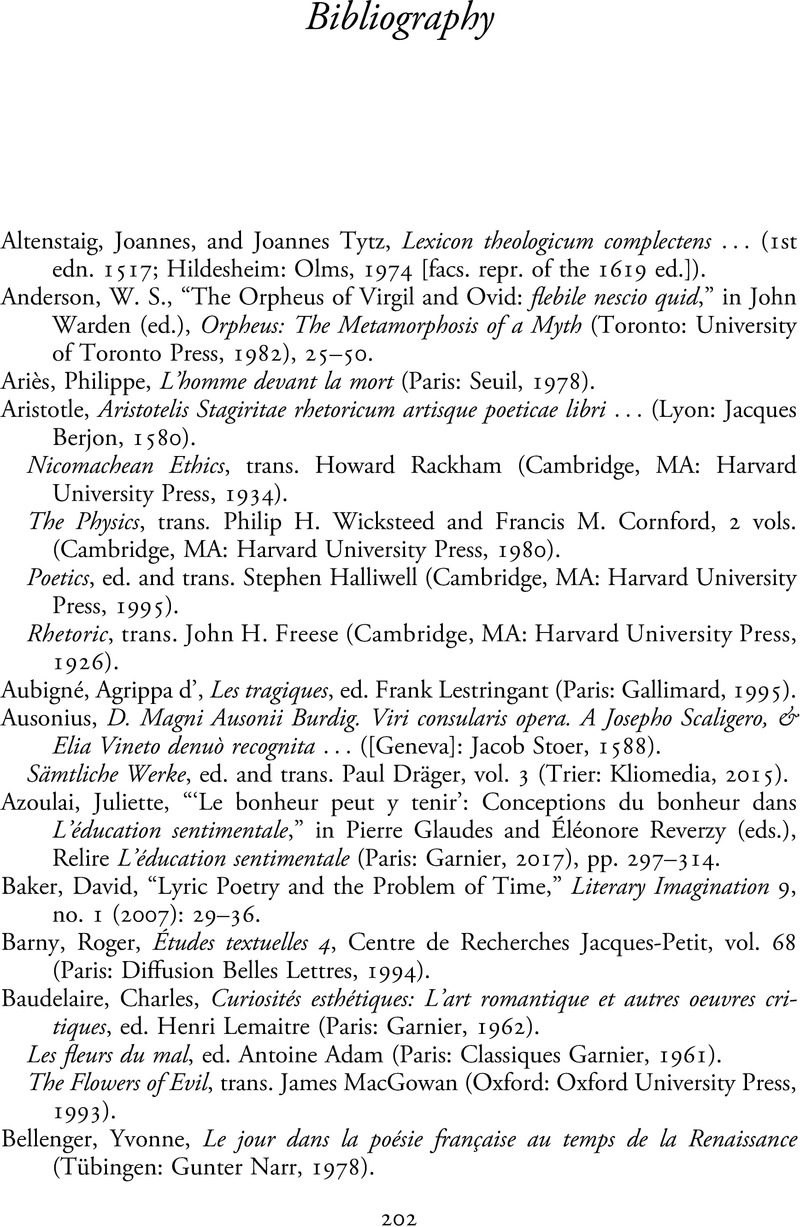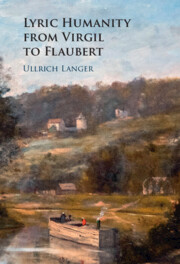Book contents
- Lyric Humanity from Virgil to Flaubert
- Lyric Humanity from Virgil to Flaubert
- Copyright page
- Dedication
- Contents
- Acknowledgments
- Introduction
- Chapter 1 Orpheus in Virgil, Ovid, Seneca
- Chapter 2 Marot’s Repeated Making and Unmaking of Death
- Chapter 3 Time, Pleasure, and Reasoning
- Chapter 4 Flaubert’s Lyric Happiness (L’éducation sentimentale, Un coeur simple)
- Chapter 5 Lyrical Recovery and Return to the Ordinary
- Conclusion
- Notes
- Bibliography
- Index
- References
Bibliography
Published online by Cambridge University Press: 11 February 2023
- Lyric Humanity from Virgil to Flaubert
- Lyric Humanity from Virgil to Flaubert
- Copyright page
- Dedication
- Contents
- Acknowledgments
- Introduction
- Chapter 1 Orpheus in Virgil, Ovid, Seneca
- Chapter 2 Marot’s Repeated Making and Unmaking of Death
- Chapter 3 Time, Pleasure, and Reasoning
- Chapter 4 Flaubert’s Lyric Happiness (L’éducation sentimentale, Un coeur simple)
- Chapter 5 Lyrical Recovery and Return to the Ordinary
- Conclusion
- Notes
- Bibliography
- Index
- References
Summary

- Type
- Chapter
- Information
- Lyric Humanity from Virgil to Flaubert , pp. 202 - 210Publisher: Cambridge University PressPrint publication year: 2023



